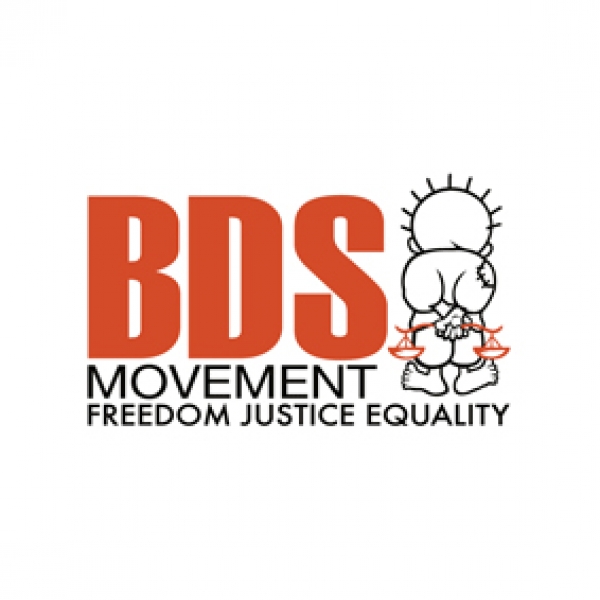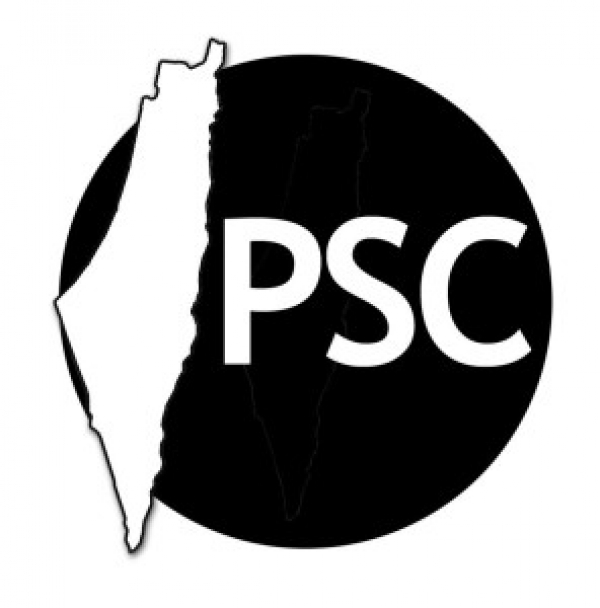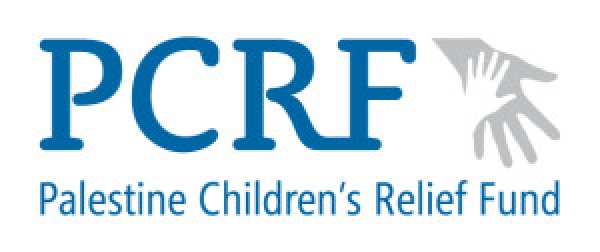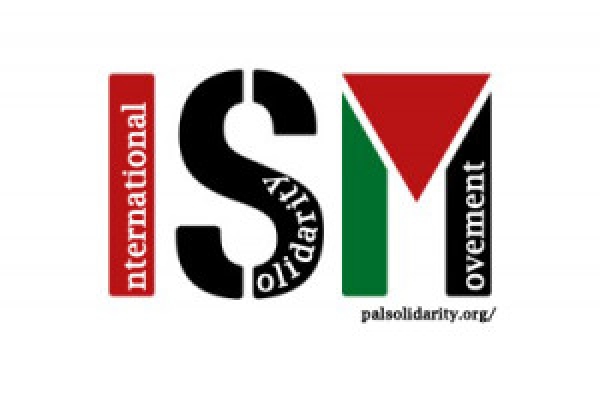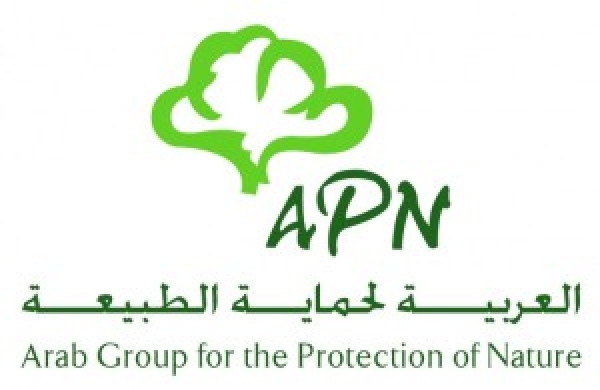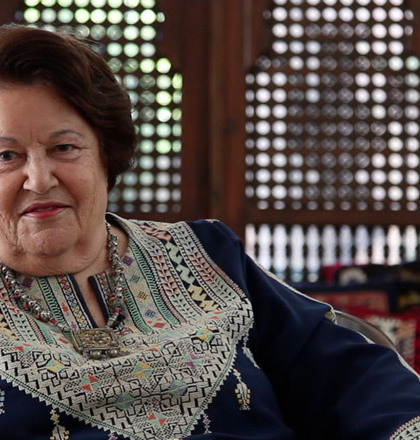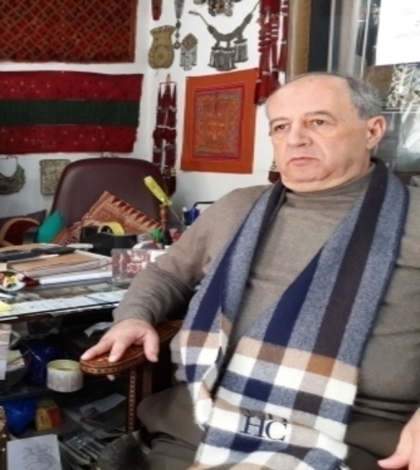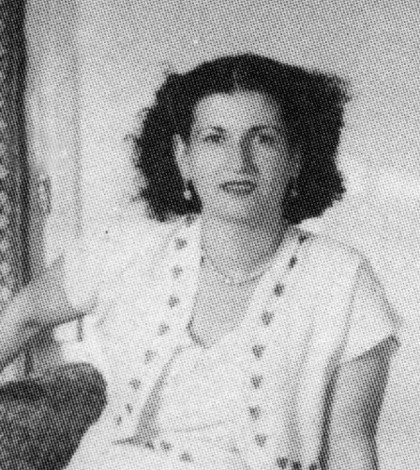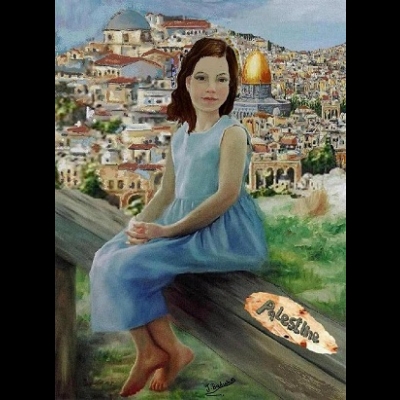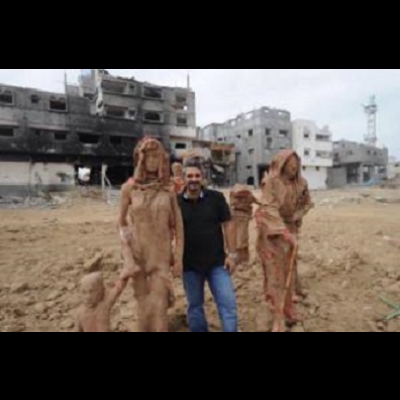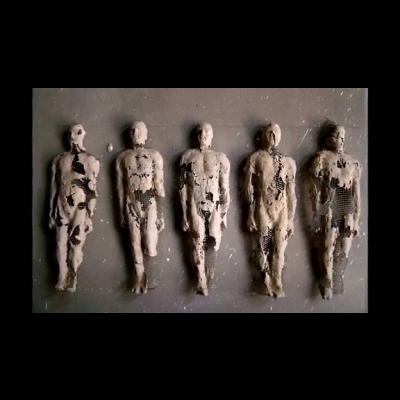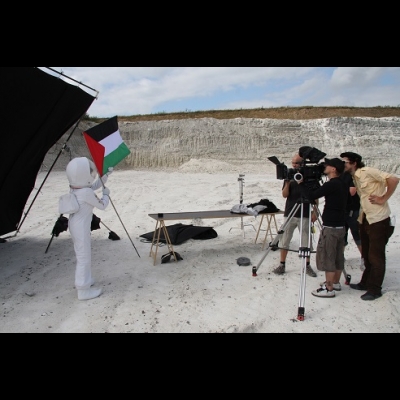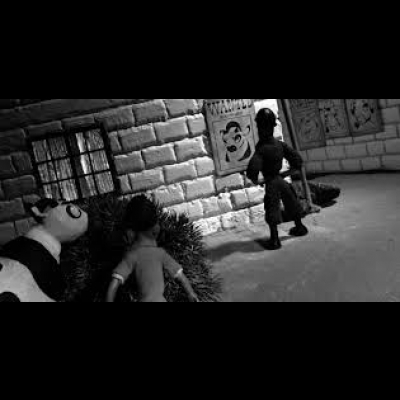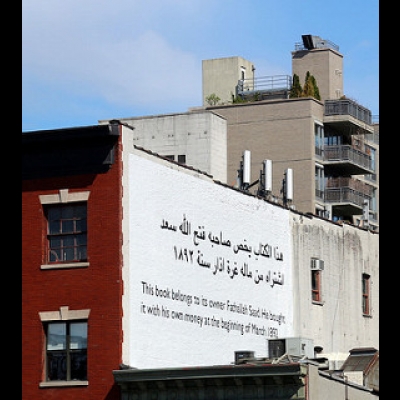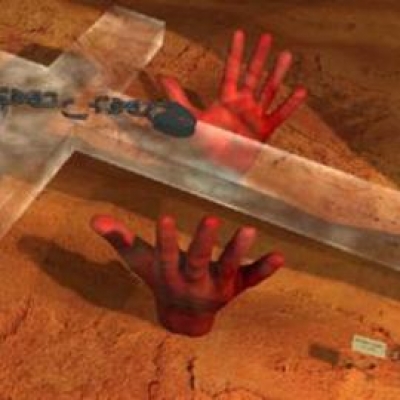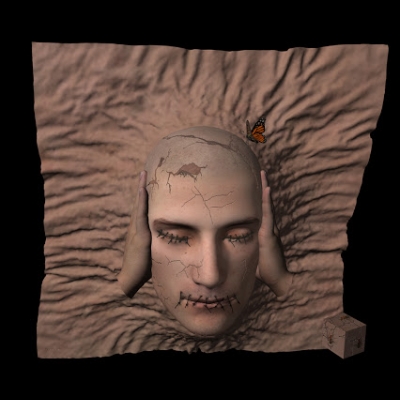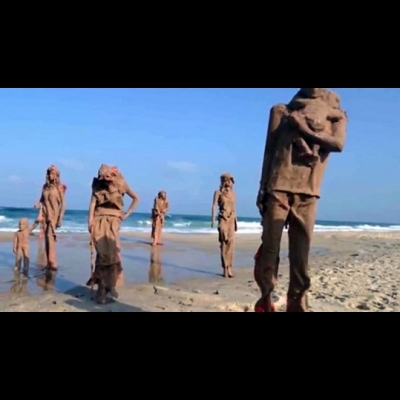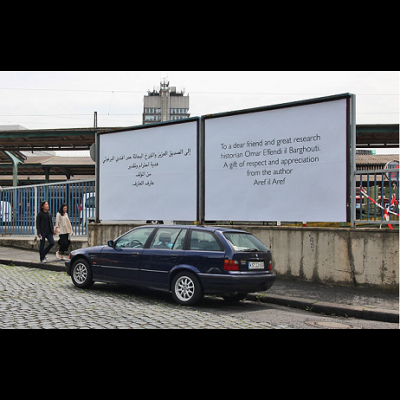Memoirs
Palestinian Public Personalities
Commantary & Opinion
Palestinian Civil Resistance & International Solidarity
Palestinian Campaigns
International Solidarity Campaigns
|
Subscribe to this RSS feed |
Subscribe to this RSS feed |
Subscribe to this RSS feed ........................................................... |
|
Subscribe to this RSS feed |
|
|
|
|
Culture
Embroidery and Design
Contemporary Designers
Poets & Writers
This article was written in 2000.
Introduction
For almost a century, Palestinians have been struggling against the colonization of their land. They have had to contend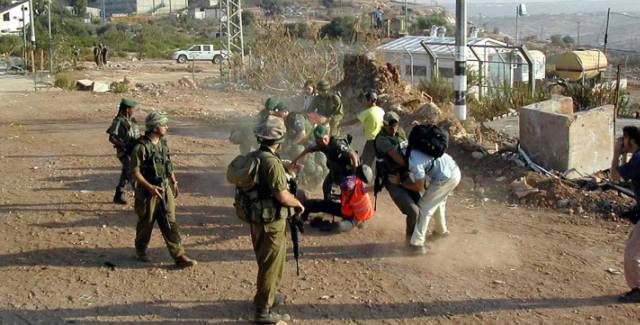 with loss, exile, occupation and violence. In response, they have resisted, and armed struggle. But Palestinian gains and victories, although far from insignificant, have so far failed to deliver an independent state; as a result, feelings of inadequacy and resignation have taken root. Although women have been involved in the liberation struggle and have shared the objectives of men, on the whole their strategies have differed.
with loss, exile, occupation and violence. In response, they have resisted, and armed struggle. But Palestinian gains and victories, although far from insignificant, have so far failed to deliver an independent state; as a result, feelings of inadequacy and resignation have taken root. Although women have been involved in the liberation struggle and have shared the objectives of men, on the whole their strategies have differed.
In this paper, I will argue that resistance, in the Palestinian case, has been strongly influenced by a sense of appropriate gender roles. This assertion contains historical, psychological and political dimensions. The conservative nature of Palestinian society has meant that the liberation struggle has been unable to distance itself completely from the Islamic traditional practices, which govern day-to-day life.
Secondly, in the patriarchal environment of Palestinian society, men-who bear responsibility for the honor of the community-tend to regard themselves as having failed to protect their land, their society and their women. Now that the struggle appears to be moving towards some kind of resolution, existence is beginning to fragment. Women find themselves having to confront not only the oppressive practices of the occupation but also some of the policies being put in place by their own government. Thus, their resistance strategies are being channeled into new avenues.
In the context of this paper, “resistance” will be used in the broadest meaning of the word. To resist means to combat the forces of oppression, wherever they occur and whatever means. Resistance is defined as “the power to resist something, an influence that hinders or stops something, a secret organization resisting the authorities, especially in a conquered or enemy-occupied country. 1 However, the notion of resistance “carries not just its common-sense implications of ‘acting opposition’ but reflection of the ‘potential for subversion and contestation in the interstices of established orders’…there are many forms of gendered resistance and…women’s collective actions do not axiomatically take the form of opposition to the exercise of violence by men, whether against other men or against women.”2
In the Palestinian case, resistance is usually understood to mean a struggle for survival and for preservation of a distinct national identity. But if we broaden the definition, it can include not simply attempts to resist colonial domination, but also undesirable practices against women on the part of the Palestinian regime and in the home. I will argue that, in all these spheres, Islam plays a central role, whether women use it as a conscious tool of empowerment or relegate its influence to private life.
Questions
The specific questions to be explored here are: firstly, given the perception of the female in Palestinian nationalist thought, what forms has women’s resistance taken?
What have been the objectives of their resistance activities? And how, in the light of the ongoing debate between nationalism and feminism, have these changed over time? Finally, how has the Islamic cultural and social environment, together with shifting male and female self-perception, influenced, inspired or constrained women’s participation in the movement for national liberation? In order to answer these questions, I will begin with a brief history of women’s participation in the national liberation struggle and then explore ways in which their resistance evolved and expressed itself as something other than a support system for men’s nationalist aspirations.
Theoretical framework
It has been argued that when conflict “intrudes into the society- as in the case of invasion of colonialism- it may become very difficult to maintain traditional social order, and boundaries, such as those of gender may well break down”. 3 At such times, women may be empowered by assuming hitherto unfamiliar or non-traditional roles. But there is also a danger of violence spilling over from the battlefront to the home front.
According to a feminist perspective on conflict, “women tend to make connections between the oppression that is the ostensible cause of a conflict (ethnic or national oppression) in the light of another cross-cutting one: that of the gender regime. Feminist work tends to represent war as a continuum of violence from the bedroom to the battlefield, traversing our bodies and our sense of self. We see that the ‘homeland’ is not, never was, an essentially peaceful unitary space.”4 There is a risk here of conflict in women’s minds as they struggle to reconcile the violent chaos taking place on the streets with the peace and sanctity which are supposed to prevail within the private sphere. The former pits one’s own people against the enemy, while violence in the home is harder to deal with.
Massad argues that Palestinian nationalism conceives of nationalist agency in masculine terms.
Nationalist masculinity, he believes, is a new type of masculinity, which has little to do with “tradition”. He suggests that “Palestinian women may have more to say in Palestinian politics in the…future, but given their discursive construction in nationalist thought, they will be able to do so not as Palestinian women struggling for Palestinian women’s rights, but as Palestinian women struggling for discursively constituted rights, where Palestinian is always already conceived in the masculine”. 5 I believe that one must challenge such assumptions, which disregard the fluidity of the current situation.
Background
From the beginning of the 20th century, what may be termed “resistance” activities by Palestinian women have passed through several stages. They began as charitable and social welfare work by a small group of upper and middle class ladies. After the First World War, women took part in demonstrations against British policies. The official “women’s movement” in Palestine was launched in October 1929; its inaugural event was the convening in Jerusalem of the Palestine Arab Women’s Congress, which as attended by more than 200 women from all over the country.6 Fleischmann argues that, although Palestinian women’s activity during the British Mandate period has been described as “politically unaware”, these women “established an organized and often militant movement that was actively involved in social, political, and national affairs.”7 She reports that women’s “frequent participation in demonstrations signified their willingness to engage in ‘unladylike’ and even violent behavior, thereby defying cultural norms that prescribed limited public visibility of women”. 8 In the 1930s, the uprising of Shaykh Izz al Din al-Qassan, through its use of Islamic symbols and
language, encouraged the participation of the mass of people in social action; Qassam’s ideology has been described as “Islamic populism” and was aimed at all levels of society, 9 including women. It was inspired by a sense of desperation at the rapidly deteriorating situation and the threat to the Palestinian national entity. Yet, even though women took some part in the 1936 Revolt, they tended to be protected from the general violence and insecurity that was besetting the society.
After the catastrophe of 1948, when the State of Israel was established and hundred of thousands of Palestinians forced to flee from their homes and their land, resistance activities had to assume new patterns. The Palestinian community, scattered throughout the Middle East and beyond, was in a state of shock. Women “describe the first decade of exile in terms that evoke death and a state of mourning.
The loss of country and home and a refugee status were akin to the loss of a loved one.”10 Losing Palestine, in the words of one exile, “was like losing a husband or a son.11 In this environment, women became the principal symbols of what it meant to be Palestinian. As time passed, organized resistance intensified. The Palestine Liberation Organization (PLO) was founded in 1964, and under its umbrella in 1965, the General Union of Palestinian Women (GUPW). During this period, the character of the resistance was militantly masculine. But women were not standing idly by. For example, in the West
Bank, in 1965, the Society for the Resuscitation of the Family, In’ash el-Usra was founded by Samiha Khalil. The “objective of this organization was to help women, especially single of households, to increase their income.”12
In the wake of the 1967 war, in which Israel occupied the West Bank and Gaza Strip and thousands more Palestinians were displaced, women organized themselves to provide support services to the population. Women were also actively involved “in resisting changes imposed by the Israeli military government such as changes in the school curriculum, and women’s participation in demonstrations carried out against the demolition of homes”. 13 In addition, the occupation of the West Bank and Gaza, according to Cockburn, brought “a more intimate form of oppression as the occupying forces entered homes and harassed even women and children”. 14 This, in Mayer’s words, “intensified Palestinian nationalism in gendered ways by provoking a politicized response to the invasion of the private sphere”. 15
A small number of women became fighters; for example Leila Khaled, who carried out military operations as a member of the Popular Front for the Liberation of Palestine (PFLP) in the late 1960’s. In her autobiography, she says: “I realized that my historic mission was a warrior in the inevitable battle between oppressors and oppressed, exploiters and exploited. I decided to become a revolutionary in order to liberate my people and myself”. 16 She was, she adds, greatly inspired by Shaykh al-Qassam, the leader of the 1930s revolt, “a man who embodied the spirit of resistance and who organized the first working class and peasant revolution in the Arab homeland.”17
In the occupied territories, Palestinian women in the 1970s developed new organizations, affiliated to the four main political factions. They departed from the welfare organizations, which were on the whole run by urban middle class women. The “younger generation of women felt that welfare organizations did not stress independence and women’s issues, focusing instead on assistance programs. The women’s work stressed forming cooperatives for food processing and for agricultural products… Most importantly, they engaged women and women’s rights”. 18
With the intifada in 1987 came unfamiliar-although equally urgent-roles for women. They early days of the intifada were, in many ways, an exhilarating time for women as they participated in fundamentally necessary ways. It seemed to many that the struggle for women’s rights was proceeding hand in hand with the national struggle; a few women began to engage in feminist debate. During this period, suggests Sharoni, “the large-scale political mobilization of Palestinian women was not perceived as a challenge to social stability but rather as a necessary and valuable contribution to the national struggle.”19 But it was also an exhausting period in which Israeli repression grew increasingly harsh, and collective punishment routine.
The Unified National Leadership of the Uprising (UNLU) “ began organizing demonstrations, strikes, and other acts of resistance to the occupation…Key in mobilizing the population were the UNLU-and PLO-issued communiqués and the Palestinian Declaration of Independence, issued by the PLO in November 1988 from its Tunis headquarters”. 20 According to Massad, the UNLU, which issued the intifada communiques, seemed “at times ambivalent, while at others, fully complicit in continuing the earlier tradition of conceiving the masculine”. 21 Communique No. 29,for example, congratulates women in their role as mothers. It salutes “ the mother of the martyr and her celebratory ululations, for
she has ululated twice, the day her son went to fight and was martyred, and the day the state was declared”. 22 Communique No.5 describe Palestinian women as the soil on which “manhood, respect and dignity” grow. On the other hand, Communique No. 35 of 1989 declared its admiration for the Palestinian woman “for her heroism in the national struggle”. 23 Women are also praised, “as detainees of the occupation authorities, 24 and mourned when they, along with children and old people, are killed by Israelis”. 25
An informal system of organizations, the Popular Committees, emerged, to which members of the women’s committees contributed their skills and expertise. Women were involved, for example, in the construction of alternative educational facilities, as schools were closed down all over the occupied territories, and they developed methods of food production to replace Israeli products. Girls and women also took part in spontaneous confrontations with Israeli troops on the streets of the West Bank and Gaza Strip.
By the early 1990s, in the view of Hamami and Kuttab, two negative trends began to emerge.
The first was the negative social effects on women of the intifada in terms of control over women’s mobility, constraints on women’s behavior, and a tendency towards earlier marriage for girls. Secondly, it was becoming apparent that the national issue could easily be hijacked “by an ideology that saw women’s political activism not as a contribution to national liberation but as threat to it”. Women activists were being physically attacked by young men in the name of religion and Islamic dress was being imposed on women.26
In September 1993, before an astonished world, the Prime Minister of Israel and the Chairman of the PLO unveiled an agreement which would give Palestinians in the West Bank and Gaza Strip limited autonomy and control over some parts of their land. Many believed that this represented a decisive move towards the creation of an independent Palestinian state in the occupied territories. The Palestinian began to organize their own government. Planning failed, however, to take into account women’s aspiration for equal rights of citizenship. The new Palestinian Authority (PA) was almost exclusively male and the proposed constitution ignored women.
In response, women began to organize on their own behalf. They produced a Declaration of principles on Women’s Rights, which stated: “We, the women of Palestine, from all social categories and the various faiths, including workers, farmers, housewives, students, professionals, and politicians, promulgate our determination to proceed without struggle to abolish all forms of discrimination and inequality against women, which were propagated by the different forms of colonialism on our land, ending with the Israeli Occupation, and which were reinforced by the conglomeration of customs and traditions prejudiced against women, embodied in a number of existing laws and legislation.”27
As the conflict has persisted, there is evidence of an increase in domestic violence against women, although no figures are available. This has resulted from the lack of an independent judiciary and-until recently- a police force, combined with men’s perception of their own powerlessness, which seeks a release in aggression against weaker member of the family. Palestinian society, “like patriarchal societies, discriminates between the sexes, for example, the upbringing of girls and boys”. 28
Unfortunately, “when a woman is physically abused by her husband and ask for support and protection from her relatives, her relatives often force her to return to her husband under the pretext of the children’s welfare”. 29 Workshops organized by the women’s centers help women to deal with what is happening to them and, as far as possible, to combat the situation.
Modes of Resistance
Resistance can take many forms. It can be active, violent, passive, constructive or subversive. For Palestinian women, resistance has ranged from the provision of support services to violent confrontation with the enemy. It was been influenced by models of appropriate female behaviour, which have changed over time. Yet it has also subverted conventional expectations. This is a result, on the one hand, of the desperation of their situation and, on the other, of a determination to create a “women’s movement”, which is distinct from male coping mechanisms.
During the struggle, women have been active participants “in all sectors of the Resistance- military, political, and social. They [did] however, have a more concentrated presence in the social field (mass work, education, information, and health) and/or in the lower echelons of the administration, serving as secretaries, clerks, telephone receptionists, etc. They appear[ed] least in higher-level political positions and the military. Their participation in the contemporary national movement dates from the origins of the movement in the 1960’s.”30
For women-as for men-the are acceptable modes of resistance. It used to be a matter of honour that girls and women should be protected from direct contact with the enemy. This has become increasingly difficult to sustain. After the initial breaking down of barriers in 1967, women started to be deliberately targeted by the Israelis, as a way of humiliating men. Later, as women grew more confident, they chose to confront the Israeli army, in demonstrations and to protect their children. Eventually, women began to be arrested and imprisoned; while in prison, they were sometimes subjected to physical and psychological torture, including sexual threats or actual abuse.31
The new political situation, it has been suggested, “needs new strategies and answers-one of them being new ways in which the women’s movement links gender liberation to national liberation (both strategically and ideologically). Central to this new program is the need to understand democratization as the link concept and strategy between national liberation issues on the one hand, and the achievement of women’s social and economic rights on the other”. 32
Role of Islam
For many Palestinian women, identification with Islam has proved empowering. The Islamic movement developed “in the context of occupation and resistance, subjugation and struggle in which the hijab is ideologized and transformed into a symbol of resistance”. 33 It has been suggested that this is less true in the Palestinian case, where the women’s movement evolved along decidedly secular lines.
Nonetheless, a parallel and equally determined Islamic women’s movement exists alongside other forms of women’s organization.
There was concern in the early 1990s that “instead of being one for national liberation that would end in the founding of a democratic secular state in which all citizens would be equal…[the Palestinians] were suddenly struggling towards a theocratic state in which there would be no room for pluralism, difference of democratically expressed ideas and one in which women’s needs would be defined by Islamicists”. 34
One can discern a degree of ambiguity in the approach taken by the Palestinian leadership towards Islamic groups. While, on the one hand, such groups are dismissed as marginal, and even divisive, on the other, there has a reluctance on the part of the leadership to publicly condemn the Islamists and thereby create dissension in the Palestinian ranks. After all, support for the Islamists is estimated to be as high as 40 per cent in the Gaza Strip and 20-25 per cent in the West Bank.35
Groups such as Hamas offer the people of these areas “a vision of an all-Islamic Palestine, to be realized only through tireless work in spreading Islamic consciousness all over the Arab and Islamic worlds and through mobilizing Muslims everywhere to join the ranks of the fighters for Palestine”. 36 But this highly idealized, and some might argue unrealistic, vision is balanced by a strong social programme. “In line with the spirit of Muslim Brotherhood, Hamas has from the outset supported a network of mosques, schools, social clubs and other social and educational facilities”. 37
In common with Islamist movements elsewhere, one of the most striking signs of the success of Hamas has been its impact on women. According to the Hamas Charter: “The Muslim woman has a role in the battle for the liberation which is no less than the role of the man, for she is the factory of men”. 38 There is no doubt that, for many women, the current popularity of militant Islam is welcome since it offers what they regard as the proper environment in which to lead their lives. For others, though, it is perceived as an imposition.
The so-called “hijab campaign “ in the Gaza Strip in the early part of the intifada is an illuminating example of what many women regard as the removal of choice. Since the late 1970s, Islamic groups have been seeking to re-impose some kind of hijab, or head-covering, on women, even though many Palestinian women had chosen to dispense with this. Hammami describes it as “fundamentally an instrument of oppression, a direct disciplining of women’s bodies for political ends”. 39 although a lot of women in Gaza prefer to cover their heads-indeed, Palestinian women or rural origin have always worn some form of head-covering, partly as a sign of their status and partly their socio-economic conditions
did not permit the adoption of so-called “modern dress”. 40- others do not and, until the early part of the intifada, “social space continued to exist for women not wear any form of hijab”. 41 However, by December 1988, it had become impossible for a woman to appear in the streets of Gaza without a head-covering. This was achieved “through a mixture of consent and coercion”. 42
Hammami argues that the Islamists used the hijab as an instrument of social pressure. It is clear, she says, that the “intifada hijab” is “not about modesty, respect, nationalism or the imperatives of activism but about power of religious groups to impose themselves by attacking secularism and nationalism at their most vulnerable points: over issues of women’s liberation”. 43 A climate of fear was created in Gaza, in which many women dared not to go out of doors without a head-covering in case they were attacked religiously-motivated young men, reminiscent of the “morals squads” in post- revolutionary Iran. This form of intimidation appeared cruelly ironic in the sense that women were forced to fear not only actions by Israeli military personnel but also by the youth of their own community.
One of the most disturbing aspects of the “hijab campaign” was the initial apparent disinclination of the UNLU to act on behalf of women. Many suspect that “certain element within the Unifies Leadership actually supported the hijab campaign, and that Fatah, in particular, was trying to form an alliance with religious groups.”44 Others were of the opinion that the issue was either “too divisive or, even worse… secondary”. 45
Whatever the reasons, it took the leadership a whole year to issue a statement condemning the imposition of the head-covering. Hammami attributes the “inability (or reluctance) of activist men to deal with the hijab campaign [to] both the weakness of the left and of feminist agendas in the West Bank and Gaza”. 46
Nonetheless, for some women, the idea of secular state is unappealing. Some Palestinian women have been influenced by trends elsewhere in the Muslim world, for example the “Islamic feminist” movement whereby women, believing that Islam is the best system by which to govern day by day affairs, seek to reclaim its meanings for themselves. Many Muslim women “have begun to take an active interest in theological arguments regarding women. They claim the right to interpret laws and religious texts themselves and to learn the skills necessary for such interpretation; they challenge androcentric and misogynist interpretations of texts; and they are determined to find in Islam justifications for demanding
individual freedom and women’s rights. They have, in other words, joined the political struggle over the right to make their religion work for them”. 47 It is natural, suggests one commentator, “that contemporary Muslim feminists, when they look at the history of their religion, are very skeptical when assured that Islam, which initially aimed to remove the disabilities women had suffered in pre-Islamic Arabia, provides the rationale for keeping women in a subjugated, inferior status”. 48
Conclusion
To conclude: At the beginning of the 21st century, the Palestinians continue to seek peace with justice. They still do not have a state of their own; and many remain in exile. Seven years after Oslo, Palestinian women are still engaged in resistance activities. They continue to resist the Israeli occupation of part of their land and the failure of Israel to honor its agreements, and they continue to struggle towards eventual statehood; but they are also fighting the Palestinian Authority itself. Perceived as corrupt and unrepresentative, the PA has failed to reflect the democratic aspiration of the Palestinian people, women
and men, and many feel a sense of betrayal. Today, according to Hamami and Kuttab, “the main issue confronting the society remains the occupation (on all levels) but with the added crisis and complication of the presence of an undemocratic governing leadership inserted between the mass of the population and the occupation.”49
However, not only do women have to resist the occupation and some of the policies of the PA, they must also tackle the issue of violence within the family, which is believed to increase during situations of conflict; at such times, according to feminist literature, there tends to be a spillover of violence into the home. But it is equally possible that this kind of violence may intensify once the conflict has been resolved. In a post-conflict situation in which women begin, firstly, to learn more about their rights; secondly, to seek to put those rights into practice; and, thirdly, to benefit from a process of empowerment, it is not inconceivable that men will take out their sense of frustration and powerlessness on family members.
In the Palestinian context, there are several ways of dealing with this. Firstly, as we have seen, through legal and constitutional channels; secondly, by resorting to the Islamic model of an ideal society; and, thirdly, by assuming it is a temporary phase and that things will improve once the sate is up and running.
In a paper, which explores the transition from conflict to post-conflict situations, Sharoni asks whether peace is more conductive to gender equality than conflict. What happens, she wonders, “to conceptions of masculinity, grounded in militarism and acceptance of violence is outlawed”. 50 She concludes that “the meanings assigned to begin a man or a woman in a particular context are not fixed or static but rather changing over time and in relation to particular political developments”. 51
Therefore, in order to challenge “the narrow formulations of peace, which inform the Oslo Accords”, 52 the leadership must come to terms “with the formation and transformation of gender identities and roles and with the ability of ordinary men and women to transform their own identities and act as agents of social and political change”. 53
Today, there is not a single “women’s movement”. Rather, a number of trends exist within the society. These have been present for some time and each contains its own mode of resistance. They also differ in terms of objectives. The danger of fragmentation among women means that there is little overall consensus about possible ways forward. One can no longer speak of a conflict between nationalist and feminist discourse.
As women have become better educated, they have grown more aware of their rights and have begun to articulate certain demands and aspirations. A variety of organizations have been established by and for women in the West Bank and Gaza Strip, including research centers, training institutes, legal centers, and others. Women are now represented in most sections of society: they are university lecturers, poets, doctors, business leaders, and members of the Palestine Legislative Council (PLC).
It is clear that women’s resistance activities have changed over time. They have evolved in response to changing circumstances but also to ideological currents within the society and in the wider region. Now women are coming to grips with political exclusion and marginalization, and with the day-to-day business of survival in a patriarchal and still dangerous environment. The history of Palestinian women’s involvement in the resistance movement and their evident organizational ability gives one confidence that they will eventually succeed in linking national liberation with gender liberation.
* Maria Holt is a Research Fellow in the Centre for the Study of Democracy, University of Westminster. She has a long involvement in Middle East politics, both as an academic and a lobbyist, and has published a number of books and articles on Arab Muslim women and violent conflict.
Footnotes:
1 The Oxford Paperback Dictionary
2 Jacobson, Ruth, Jacobs, Susie, and Marchbank, Jen, “introduction: States of Conflict” in Jacobs.
3 Macdonald, Sharon, “Drawing the lines-gender, peace and war: an introduction”, in Macdonalds, Sharon, Holden, Pat and Ardener, Shirley, -editors, Images of women in Peace&Wae: Cross- Cultural l& Historical Perspectives, London: Macmillan, 1987, p.9
4 Cockburn, Cynthia, The Space Between Us: Negotiating Gender and National Identities in Conflict, London: Zed Books, 1998, p.8.
5 Massad, Joseph, “Conceiving the Masculine: Gender and Palestinian Nationalism”, The Middle East Journal, Volume 49, Number 3, Summer 1995, p.483.
6 Fleischmann, Ellen J, “The Emergence of the Palestinian Women’s Movement, 1929-39”, Journal of Palestine Studies XXIX, no 3, Spring 2000, p.18.
7 Ibid. p.16.
8 Ibid. p. 24.
9 Johnson, Nels, Islam and the Politics of Meaning in Palestinian Nationalism, London: KPI, 1982, p.54.
10 Peteet, Julie M, Gender in Crisis: Women and the Palestinian Resistance Movement, New York: Columbia University Press, 1991, p.26.
11 Madame Haddad, a middle-aged woman from Jaffa, quoted by Pateet, ibid.p.26.
12 Sabbagh, Suha, “Palestinian Women and Institution Building”, in Sabbagh, Suha, editor, Arab Women: Between Defiance and Restraint, New York: Olive Branch Press, 1996, p, 108.
13 Ibid. 107.
14 Cockburn, The Space Between Us, op.cit.p.118.
15 Mayer, Tamar, “Heightened Palestinian nationalism: military occupation, repression, difference And gender” in Mayer, Tamar, editor, Women and the Israeli Occupation: The Politics of Change, London: Routledge, 1994, p. 63.
16 Khaled, Leila, My people shall live: The Autobiography of a Revolutionary, edited by George Hajjar, London: Hodder and Stoughton, 1973, p. 22.
17 Ibid.pp.26-7.
18 Sabbagh, “Palestinian Women and Institution Building”, op.cit.p.109.
19 Sharoni, Simona, “Gendering Conflict and Peace in Israel/Palestine and the North of Ireland”, Millennium, Vol 27, No. 4, p. 1064.
20 Massad, “Conceiving the Masculine”, op.cit.p.474.
21 Ibid.pp.474-5.
22 Communique No. 29, “The Call of the Wedding of the Palestinian Independent State”, quoted by Massad, ibid. p.474.
23 Ibid.p.476.
24 Communiques No. 17 and 22, Ibid.p.475.
25 Commniques No. 21, Ibid.p.475.
26 Hamami, Rima, and Kuttab, Eileen, “The Palestinian Women’s Movement: Strategies Towards Freedom & Democracy”, News From Within, Vol XV, No. 4, April 1999, p.3.
27 “General Union of Palestinian Women, Jerusalem-Palestine: Draft Document of Principles of Women’s Rights (Third Draft), in Sabbagh, editor, Arab Women: Between Defiance and Restraint, op.cit.p.259.
28 Ibid.p.5.
29 Yahya, Mohammad al-Haj, “Violence against women leads to oppression”, Sparks, April 1992, p.5.
30 Peteet, Gender in Crisis, op.cit.p.147.
31 See, for example, Thornhill, Teresa, Making Women Talk: The Interrogation of Palestinian Women Detainees by The Israeli General Security Services, London: Lawyers for Palestinian Human Rights, 1992.
32 Ibid.pp.4-5.
33 El Guindi. Fadwa, Veil: Modesty, Privacy and Resistance, Oxford & New York: Berg, 1999, p. 174.
34 Hamami and Kuttab, “The Palestinian Women’s Movement”, op.cit.p.3.
35 Ozanne, “The shanty town fundamentalists”, op.cit.
36 Taraki, The Islamic resistance Movement in the Palestinian Uprising”, op.cit.p.175.
37 “The Challenge of Hamas”, monitored from the BBC World Service, 19 February 1993, quoted in AJME News (Beirut), February-March 1993.
38 “Charter of the Islamic Resistance Movement (Hamas) of Palestine”, Journal of Palestine Studies, Volume XXII, No 4, Summer 1993, pp.127-9
39 Hammami, Rema, “Women, the Hijab and the Intifada”, Middle East report, May-August 1990, p.25.
40 Moghadam, Modernizing Women, op.cit.p.163.
41 Hammami “Women, the Hijab and the Intifada”, op.cit.p.25.
42 Ibid.p.25
43 Ibid.p.28.
44 Ibid.p.28
45 Ibid.p.28.
46 Ibid.p.28.
47 Afkhami, Muhnaz, and Friedl, Erika, “Introduction”, in Afkhamia and Friedl, editors, Muslim Women and the Politics of Participation: Implementing the Beijing Platform, Syracuse: Syracuse University Press, 1997,p.xiii.
48 Mayer, Ann Elizabeth, Islam and Human Rights: Tradition and Politics, Boulder and San Francisco: Westview Press and London: Pinter Publishers, 1995,p.94.
49 Ibid.pp.3-4.
50 Sharoni,”Gendering and Peace”, op.cit.p.1062.
51 Ibid. p.1088.
52 Ibid, p.1088.
53 Ibid, p.1089






